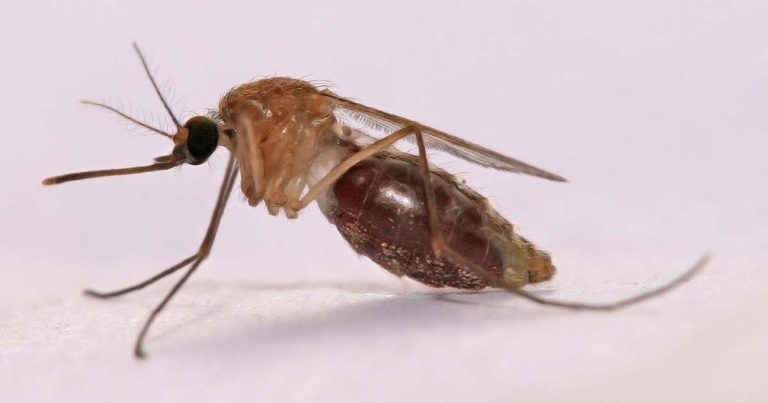8 Jan 2021
New gene – termed femaleless by researchers – determines sex of malaria mosquitoes and can be manipulated to prevent females forming.

An Anopheles gambiae mosquito. Image © Muhammad Mahdi Karim / Wikimedia Commons
Researchers at The Pirbright Institute have discovered a new gene that determines the sex of malaria mosquitoes.
The gene, which has been named femaleless by scientists, can be manipulated to prevent female mosquitoes from developing. Only females bite to feed on blood, and, therefore, spread disease.
It is hoped the discovery could provide a new means to genetically control mosquito populations and be used to break malaria transmission.
In a study published in Current Biology, scientists from Pirbright’s vector molecular biology group first identified femaleless in the Anopheles gambiae mosquito – a primary carrier of malaria in Africa.
They were able to show that if the expression of the gene in mosquito eggs is experimentally decreased, females develop into individuals that look more like males in appearance, and are unable to mate or feed on blood. In some instances, their development is arrested altogether.

On further investigations, the Pirbright team found femaleless was unique to mosquito species in the Anopheles genus, the one solely responsible for transmitting human malaria.
In 2019, malaria caused more than 200 million clinical cases and 400,000 deaths globally. The gene was detected in all Anopheles species studied, and its genetic sequence was similar in different species.
The study also demonstrated that disabling femaleless in distantly related Anopheles species has the same effect as seen in A gambiae.

Jaroslaw Krzywinski, head of the vector molecular biology group at Pirbright, said: “We first investigated femaleless because we suspected it would have a role in sex determination, but it was unexpected that knockdown of the gene’s expression would lead to female lethality.
“This gene is highly conserved in sequence and function in various Anopheles species and, as such, provides an excellent universal target to eliminate females of major malaria vector species, enabling the control of their populations.
“We hope that this discovery could help us to tackle one of the most devastating insect-borne diseases in the world.”